Low-impact transport - introduction
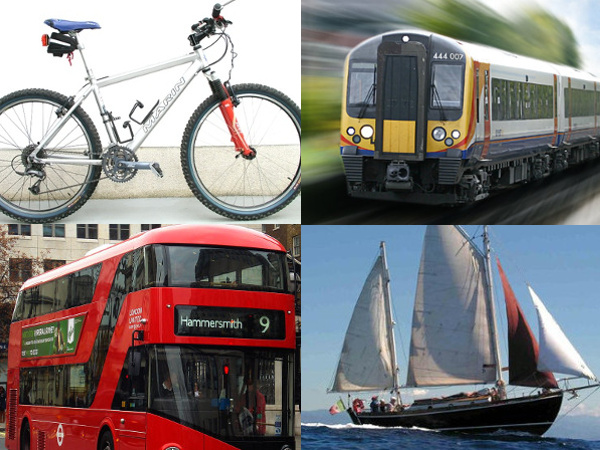
“Mobility will eventually collapse in cities that give priority to the car.” – Jens Martin Skibsted
Contents
What is low-impact transport?
It’s moving people and freight in ways that don’t damage nature, communities and individuals to the extent that the current transport system does – everything from carbon and pollution emissions to covering the countryside in asphalt and concrete and making communities unhealthy, ugly and dangerous. The main culprits are the car, aviation and oil industries, and their impact can be reduced in several ways:
Reducing the need for transport at all
This includes designing communities so that housing, work, shopping, schools and leisure are closer together rather than zoned, like Milton Keynes and most US cities. This may mean reducing the scale of enterprises, but that works for us. Then there’s working from home, online meetings and conferences, and low-impact tourism, without flying.
Fuel efficiency / alternative fuels
Fuel efficiency only works to reduce overall fuel use in a stable, non-growing economy, as shown in this graph:

This is due to the Jevons Paradox – i.e. money saved by fuel efficiency is spent on other things, that may actually require more energy than was saved; plus GDP growth will mean that consumption increases overall.
More sustainable ways to power transport (than burning fossil fuels) include electricity (from renewables); wood gas; biodiesel (from waste cooking oil); wind; and muscle power (walking, cycling and animals).
Sharing vehicles
This ranges from sharing our private vehicles (car sharing or hitch-hiking) to sharing public vehicles (trains, buses etc.).
Freight / moving goods more sustainably
Inland freight is best transported by canal (requires around 6% of the energy per tonne / km compared to trucks, and 2.3% compared to air freight), or by train (9% and 3% respectively), according to the US Dept. of Energy. International freight – well, sail cargo is making a comeback.
But again, localisation will be more effective more quickly, rather than goods being transported to remote locations to be processed (often in other countries) before being transported back for sale; or exporting and importing similar amounts of the same product (meat, potatoes, milk etc.) between countries. Exports are seen as a good thing in this crazy system, rather than each country producing for its home market. Even more locally, cycle courier co-ops are springing up everywhere, which we think is great.

What are the benefits of low-impact transport?
Environmental
- Reduces fossil fuel consumption: transport produces more carbon emissions than any other sector in Western countries – around a third.
- Reduces roadkill.
- Reduces the need for new roads or to widen existing roads, which destroys habitats and makes the countryside uglier and noisier. We could even allow motorway or dual carriageway lanes, or even entire roads, to return to nature and become wildlife corridors. This has a precedent – the Saxons had no need for the Roman road network that allowed soldiers to move around the empire, and booty to be transported to Rome. They based their economy on local markets, and the old roads became overgrown.

Community / individual
- Reduces accidents, congestion and noise (and fewer giant articulated trucks trundling through your town or village).
- Fewer front gardens paved for parking.
- Improves safety, and allows children to play in the street (over 3000 people per year die in road traffic accidents in the UK, and over 30,000 in the US).
- Improves health and fitness via improved air quailty and more cycling and walking; fewer cars means more space for cyclists, which means fewer cars, and so on in a virtuous spiral. Also, buses don’t go very fast, and their doors don’t open outwards, like car doors – so buses and bikes complement each other well.
- You can read or work on public transport.
- If you can do without a car, you’ll also be doing without repayments or initial cost, MOT, service & repairs, fuel, oil, breakdown service, spares, insurance, parking fees, road tax, fines, tolls and congestion charges – you’ll have more money and fewer headaches.
In the Netherlands, they’ve understood the costs and headaches incurred by congestion, accidents and ill-health, and have funded cycle paths, pedestrianisation and public transport accordingly. Local businesses have benefited.
Democracy
- Fewer cars sold and fewer flights means less money for car, aviation and oil corporations and less wealth concentration, which corrupts democracy.
What can I do?
If we want a sustainable transport system, then the private car has to take the brunt. But ultimately, if we want to move away from an expensive system that causes regular gridlock and damages the environment as well as our health and communities, then it should be cheaper and easier for four people (let alone one) to travel by public transport rather than by car – and we’re a long way from that. So we have to accept that car use should be a bit more expensive / inconvenient to allow public transport, walking and cycling to become cheaper / more convenient. We’re never going to get a transport system like the one above unless we start to change our habits.

Starting with the assumption that you have a car, these are the things you can do, in order of effectiveness (some of you will start further down this list than others):
Increasing the fuel efficiency of your car
Reduce the amount of fuel you burn by:
- Following smarter driving tips to save fuel;
- But not rushing to buy a new fuel-efficient car: any fuel efficiency benefits are likely to be dwarfed by the extremely large amount of energy needed to manufacture it;
- And not having a 4×4 unless you live on a farm.
Changing the fuel your car uses
Move away from fossil fuels by:
- Having a go at making biodiesel from waste cooking oil;
- Making sure your next car is an electric / hybrid vehicle;
- Or can run on wood-gas.

Sharing your car
Help reduce the number of vehicles required by:
- Car-sharing for one-off or regular journeys;
- Including picking up hitchhikers.
Phasing out your car
With a global population heading towards 10 billion, there doesn’t really seem to be a way to have cars sustainably (unless you think that only certain privileged people should have them). In a world without cars, we’d have to reorganise ourselves so that most of what we need to do is within walking and cycling distance.

Bearing in mind the above benefits, do you think that a carless world would be a better or worse place than this one? If you think it would be better, you can use your car less, or bin it altogether by (in order of difficulty):
- Using teleconferencing / video meetings – they’re getting easier and more popular (meet.coop is a co-operative option);
- Using public transport more;
- Walking and cycling;
- Including with your kids to school rather than the car run, or enrol your child in a walking bus group (or organise one if there isn’t one);
- Car sharing in someone else’s car;
- Working from home;
- Moving closer to work (or working nearer to home);
- Having a go at hitchhiking.
Combining some or all of the above
For example, you could work from home 2 days per week, car share on the other 3 days (in an electric vehicle), and cycle or walk for any other short journeys (that’s covered most things!). You can hire a car or get the occasional taxi (we don’t recommend Über – but there are co-operative options now – just search for coop taxis and the name of your town), when you need to – or just use a local cab firm.
Co-operative apps are being developed to provide an alternative to the exploitative gig economy for cycle couriers.
But people are wary of giving up their car, especially in rural areas, when public transport can be unreliable, so…
Campaigning
You can help to campaign for more sustainable transport generally – see the Campaign for Better Transport or Sustrans. Campaigns could include subsidies for public transport, stopping bus and train route closures, cycle lanes, giving coaches their own lanes on motorways, pedestrianisation etc.
Not flying
Reduce your air miles, or better still, give up flying altogether. Again, with a population of 10 billion, everyone flying ‘only’ once a year would be suicidal; but if only a small percentage of the world are able to do it, that’s really elitist. We have to stop burning fossil fuels, so a sustainable society can’t really contain an aviation industry.
Here’s a suggestion – See the world when you’re young – overland. For example, a couple who used to work for Lowimpact.org in the UK travelled back to Australia overland, by train, bus, foot, hitch-hiking and boat, and blogged about it here. You could even do it by going WWOOFing, and you can hitchhike oceans too. After that you can take flightless holidays and help build a thriving, safe, fun, unique, interesting and beautiful community where you live. Let’s make all the places we live desirable places to be.

Freight
Support sustainable freight buying local, downshifting and/or finding goods brought from overseas via sailing boats.
We’ll leave the last word to Simon Fairlie of The Land Magazine, about what it might be like with fewer cars:
“… garages will make a comeback, providing hire cars, minibuses, bicycle repairs, light engineering and jobs for youngsters who like messing about with motors. Pedestrians, children, cyclists and horses will reclaim the streets. Old people will walk to the shops, and younger adults bike to work. Verandas will replace car ports, bus stops will replace speed cameras, allotments will replace bypasses, and chickens will once again be able to cross the road and get to the other side.”

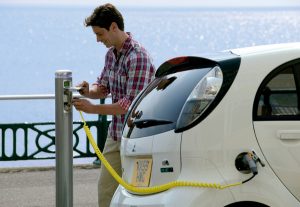

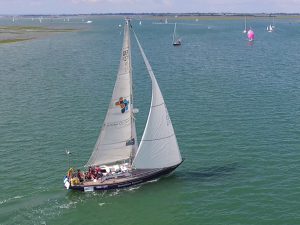

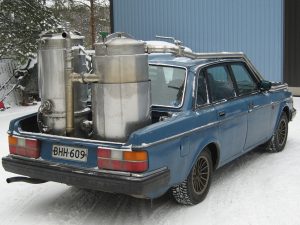
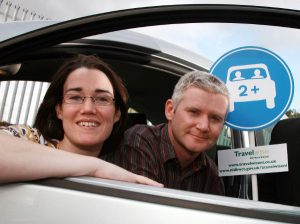

6 Comments
I love your model for a better public transport system! With the current strikes, I think there are lots of people who would agree! I also think we could learn a lot from some European countries. For instance, in Austria, one company runs all the trains and you can buy an annual train pass for the whole country (last time I looked it cost about 1200€). Within Vienna, you pay 365€ for a annual ticket and this allows you to bring your bike and dog with you on the train or underground at no extra cost, and allows unlimited use all the different methods of public transport – bus, tram, underground and trains within the city limits. I don’t know what it’s like in smaller towns and villages, but I think that Austrians on the whole seem to be happy with their public transport system. I wonder what it’s like in other European countries, as well as further afield?
I was wondering what people would suggest for sustainable long-distance travel – I live in a different country to my family, and obviously want to travel back to see them. I limit myself to one return flight a year, and the rest of the time take a coach, which takes between 25 and 30 hours. I feel bad about the environmental impact, but I really want to see my family!
I always recommend travelling overland when you’re young (hitch-hiking, public transport, bicycle, boat etc.), see the world, then settle somewhere you want to be and don’t do overseas holidays any more. We had a couple of young Australian volunteers at Lowimpact who went home overland and had a whale of a time, and are now building a straw-bale home on a rural intentional community – exactly where they want to be.
I know this can be a difficult topic, because it’s personal, but why do you live in a different country to your family if you really want to see them?
I love travelling overland, it’s so much more interesting and enjoyable than flying, not to mention the environment. The problem I have, is that it takes so long and, with a chronic back problem, I end up so uncomfortable by the end of it.
As to my situation: I live with my partner in Vienna but my family are in the UK. Even if I convinced him to move to England, we’d still travel back to Austria to see his family, so that’s not a viable alternative! I think I’ll have to try different overland routes until I find one that works the best. I looked at http://www.seat61.com and there are some very interesting suggestion for train travel. I like the idea of staggering the journey over a few days, and staying in a hostel or with a CouchSurfing host in a different city.
Ah, the old ‘partners from different countries’ thing – so one of you has to be far from their family. Good on you for trying to find alternatives. I know so many people who say they’re concerned about the environment, but won’t even consider giving up flying.
I only stumbled upon this today, exactly a year later – what a coincidence!
I have travelled from my home in Suffolk to Verona, Italy and back two or three times and it took me more or less 24 hours at the most. I booked the sleeper out of Paris, so that for the longest part of it I was sound asleep. I planned the outbound journeys to give me an afternoon in Paris and on the return journey I just kept travelling.
I also spent 5-6 months in Nantes, France about16 years ago and was very impressed with the tram system. All the traffic lights gave priority to the trams which made them preferable to using my car around town. They have, or certainly had, a very good rail network too and the TGV service gets you round the country much faster than by road.
I get so frustrated in airports hanging around in departure lounges and waiting to get luggage back, that I prefer trains, if they available
I just wish I had the power to make it cheaper for you, and for people like you, Theresa.
Yes, there are lots of European cities that don’t just prostrate themselves to the car like we do in the UK. I cycled around Europe when I was younger. In Copenhagen, I’d never seen anything like it – completely dominated by cyclists, which is how it should be in cities, I think. The more the roads are designed for motor traffic, the less safe they are for cyclists.